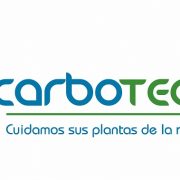Mexico feeding the world: opportunities for mexican food industry. Ximena Caraza-Campos. ProMéxico
For over two decades, Mexico has embarked on a steady path towards trade liberalization and deregulation of foreign investment. The 10 treaties-sequence of free trade agreements signed by our country that give preferential access to 45 countries, equivalent to over 60% of have not only made Mexico one of the world’s most open-GDP mundial economies, but have profoundly changed trade patterns in the various sectors of the national economy.
The agricultural and food industry is a prime example of the interesting transformation of the Mexican economy have grown from a primarily subsistence economy to a free market in agricultural production and national agribusiness, is also exported globally daily basis. Like the growth of our agricultural and food exports, Mexico consumes more and more products in the world.
Since the beginning of the mandate of the President, Enrique Peña Nieto, it has been given a big boost to the positioning of our country as an agricultural producer, still, today, one of the most dynamic sectors with a growth rate of around 2.8 % annual. This is due largely to the change in the promotion scheme for the-por via the subsidio-agricultural production: the care model we productivity incentive.
By 2014, Mexico ranked as the third largest producer of processed foods in Latin America and the twelfth worldwide; We have also been in that period the second largest supplier of US processed foods. This industry sector amount to 12% of GDP from manufacturing and 4% of total GDP. The Ministry of Economy of Mexico estimates that between 2014 and 2020, the industry will grow at an average annual growth rate of 4.5%.
Only in 2014, the amount of the sector’s exports totaled 8.261 million dollars. We are a leading exporter of various agricultural products; between the main we note that Mexico ranks first worldwide exporter of avocado, tomato, mango, guava and papaya. We are also the second largest exporter of melon and watermelon, asparagus; the third of cucumber, lime (limes) and celery; among others. Estados States, but- -Our main market remains North America and Canadá also have a growing presence in Asia-Pacific markets such as Japan and Hong Kong.
Meanwhile, the entry into force of the Free Trade Agreement with the European Union in 2000, catalyzed the growth of trade between Mexico and the European common market, and that under it, with regard to agricultural products and EU fishing eliminated import duties since 2008 and Mexico since 2010; except for a small list of sensitive products including meat, cereals and dairy products. In 2014, the main destination of Mexican agrifood exports in Europe was Spain, followed by the UK and the Netherlands.
The characteristics and virtues of the agrifood industry already described, together with offering competitive costs, make Mexico the fourth most attractive country for investment. All, in conjunction with the incentives the country offers investment and the security that the regulatory framework has attracted the most important companies in the global industry to establish production units in Mexico, but also, and so growth, many medium and small countries like Spain that are in our country a strategic platform for its market operations with NAFTA and Asia-Pacific companies. Only in 2014, we received $ 433 million in foreign direct investment to the sector, and in the decade between 2004 and 2014 has an accumulated investment of 16.392 million dollars; the main investors in the same period were the United States, the Netherlands, Switzerland, Japan and Luxembourg.
According to a survey of global consulting [1], Mexico offers the 9.1% savings in manufacturing costs in the processed food industry, with respect to costs in the US and other countries. Additionally, Mexico City and Monterrey were placed respectively in the first and second place in the ranking of lower costs citywide.
Mexico is also attractive for investment because of the importance it represents the domestic market. In 2013, the consumption of processed foods in Mexico reached 138.449 million dollars, with the expectation that between 2014 and 2020 grew by 4.3% in the average annual growth rate is observed. In 2014, sales of agri-food industry in the domestic market totaled a value of 67.451 million dollars. This gives us a clear picture of the potential offered by itself, the Mexican market for its consumption potential.
In short, we can only reiterate that the Mexican food industry has seen incredible growth due to its potential and strategic changes that have benefited their development. The agrifood sector in Mexico is an area of great opportunity for investors who want to develop their business and grow their profits in a healthy and stable industry.
ProMéxico is an agency of the Mexican Federal Government in charge of strengthening Mexico’s participation in the international economy; to this end, it supports the export activity of companies established in Mexico and coordinates actions to attract foreign direct investment to the country. If you want more information about our services, you can contact the representative office of ProMéxico in Spain through the mail spain@promexico.gob.mx.
Ximena Caraza-Campos, director for Spain in ProMéxico. Commercial Office of the Embassy of Mexico.
[1] Fuente: KPMG, Competitive Alternatives, (KPMG’s Guide to International Business Location), 2014.















